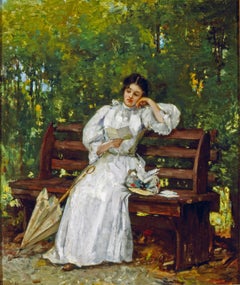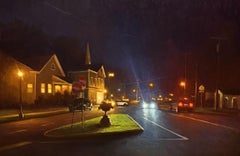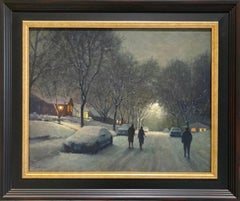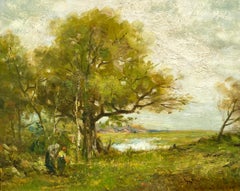Richard Creifelds Art
Richard Creifelds was a prominent and highly-sought-after genre scene and portrait painter active in New York during the latter half of the 19th century. Creifelds began his artistic training at the National Academy of Design in 1871, where his classmates included James Carroll Beckwith, Frederic Edwin Church and Albert Pinkham Ryder. The next year, Creifelds traveled to Europe, where he attended the Akademie der Bildenden Künste (Academy of Fine Arts) in Munich and studied under famed German painters Franz Xaver Barth and Alexander von Wagner. While abroad, Creifelds perfected his skill for genre and portrait painting, drawing inspiration for his genre scenes from the important group of Dutch genre painters known as the ‘Dutch Little Masters,’ which included artists such as Gerard Ter Borch, Jan Steen and Pieter de Hooch. Returning to New York after six years in Europe, Creifelds received several public art commissions including the altarpiece for St. Andrews Church at East 127th street, The Calling of St. Andrew (1880), which became one of his most celebrated works. Other public commissions include a portrait of the prominent New Yorker William B. Dana, and a portrait of New York City Mayor Hugh Grant, both of which hang in the New York City Chamber of Commerce. The artist also worked on several genre paintings, capitalizing on their popularity at the turn of the century. Working prolifically, Creifelds participated in the most prestigious art exhibitions in the United States such as the Pennsylvania Academy of the Fine Arts and National Academy of Design. Creifelds’s painting, A Quiet Afternoon in the Park, attests to the artist’s skill for genre painting. The painting features a fashionable modern woman at the turn of the century seated on a bench presumably located in New York City’s Central Park. Creifelds picture captures life a century ago and gives today’s viewers a sense of beauty and tranquility.
1890s American Realist Richard Creifelds Art
Canvas, Oil
2010s American Realist Richard Creifelds Art
Canvas, Linen, Oil
2010s American Realist Richard Creifelds Art
Canvas, Linen, Oil
1980s American Realist Richard Creifelds Art
Canvas, Oil
2010s American Realist Richard Creifelds Art
Oil, Canvas
2010s American Realist Richard Creifelds Art
Canvas, Oil
21st Century and Contemporary American Realist Richard Creifelds Art
Oil, Canvas
21st Century and Contemporary American Realist Richard Creifelds Art
Canvas, Oil, Ink
1910s American Realist Richard Creifelds Art
Canvas, Oil
2010s American Realist Richard Creifelds Art
Canvas, Linen, Oil
21st Century and Contemporary American Realist Richard Creifelds Art
Canvas, Linen, Oil
1950s American Realist Richard Creifelds Art
Oil, Canvas
21st Century and Contemporary American Realist Richard Creifelds Art
Canvas, Oil
1890s American Impressionist Richard Creifelds Art
Canvas, Oil
1890s Post-Impressionist Richard Creifelds Art
Canvas, Oil
1890s Post-Impressionist Richard Creifelds Art
Oil, Board
Late 19th Century American Impressionist Richard Creifelds Art
Oil



